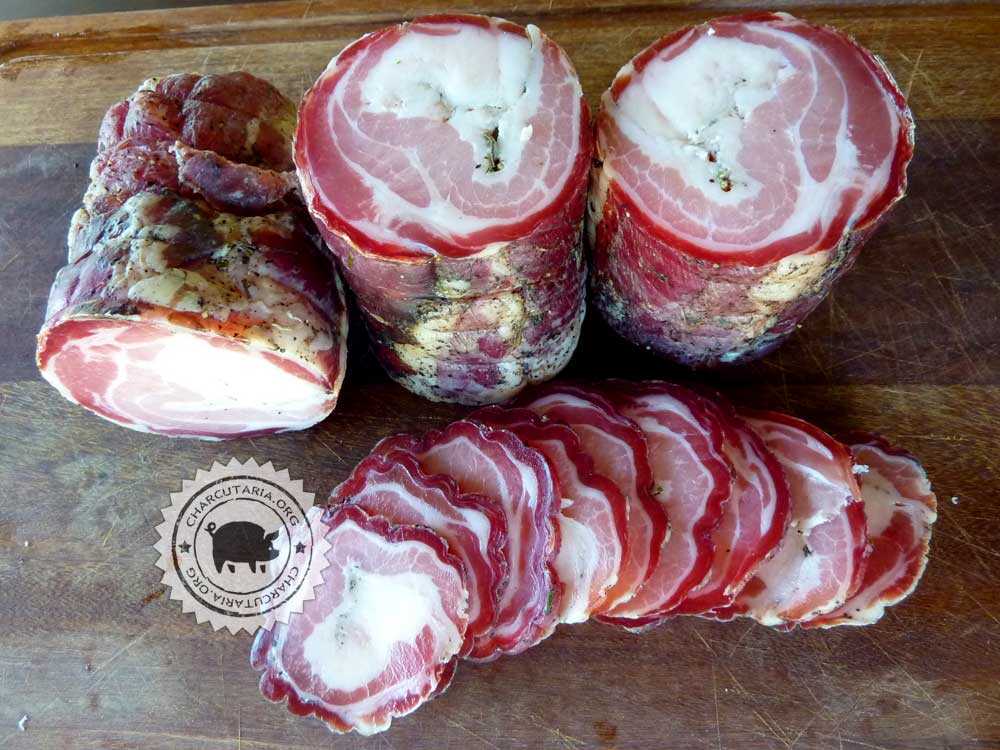
Pancetta é o bacon italiano e um ingrediente delicioso usado em muitos pratos na Itália. É a barriga de porco curada com sal e temperos, depois é enrolada e pendurada para secar por algumas semanas. Normalmente fatiada ou picada e refogada, depois combinada com legumes salteados. Inúmeras receitas começam com o refogado de cebolas e outros vegetais aromáticos. Abaixo a receitada pancetta feita em casa.
Adicione a pancetta em cubos em qualquer prato e adicionará uma camada adicional de sabor. O clássico prato romano espaguete à carbonara é feito com pancetta e ovos salteados. Pedaços de pancetta podem ser adicionados a ensopados, feijões e sopas.
O processo tradicional de curar e secar a pancetta leva cerca de três semanas, mas variações podem ser feitas conforme o gosto de cada um. A Pancetta não é destinada originalmente ao consumo direto, é utilizada no preparo de outros pratos, então não é necessário deixar secar por completo como uma copa ou salame, ela pode ficar ainda mole.
Ingredientes da Pancetta Artesanal
- 1,2 kg Barriga de porco
- 25g sal – 2%
- 3g sal de cura 2 (6% de nitrito, 3% de nitrato e 93,75% de sal) – 0,24%
- 3g antioxidante (com eritorbato de sódio) – 0,24%
- 12g açúcar mascavo
- 2g pimenta do reino
- 1 ramo de tomilho picado
- 1 ramo de manjerona picado
- 2 dentes de alho amassados
- 1g nóz moscada
Preparo da Pancetta Artesanal
1. Apare a barriga de porco de modo que suas laterais fiquem lineares, formando um quadrado ou retângulo.
2. Combine todos os ingredientes secos em uma tigela e misture bem para uma distribuição uniforme. Esfregue todos os ingredientes na barriga de porco para dar uma cobertura uniforme sobre toda a superfície.
3. Coloque a barriga em um saco plástico ou em um recipiente com tampa. Leve à geladeira por 7 dias. Vire a barriga de porco diariamente para redistribuir os temperos.
4. Após 7 dias, verifique a firmeza da barriga de porco. Se estiver firme no ponto mais espesso, está curada. Se ainda parecer mole, leve à geladeira com a cura por mais 1 a 2 dias.
5. Retire do saco ou pote, retire o excesso de tempero e seque a carne com um pano ou papel toalha. Enrole a barriga de porco com força, como se fosse uma toalha grossa, e amarre-a bem com barbante intervalos de 3 ou 4 centímetros. É importante que não haja bolsas de ar dentro da peça.
6. Envolva em filme de colágeno, use uma rede elástica para facilitar e pendure a pancetta em um lugar fresco e úmido para secar por 2 semanas. As condições ideais são 10°C a 14°C com algo umidade perto de 70%. Uma adega vinhos, um porão fresco e úmido ou dentro de uma caixa plástica na gladeira(ver receita de salame feito na geladeira) podem funciona bem. A umidade é importante: se a sua pancetta começar a ficar dura, ela está secando e deve ser embrulhada e refrigerada. A pancetta deve ser firme mas maleável, não dura. Como a pancetta não é para ser comida pura, a cura não é um estágio tão crítico quanto é para itens como copa, salame, presunto cru ou linguiças secas. Mas secar/curar/maturar a pancetta aumenta sua textura, intensifica seu sabor e ajuda a na conservação. Assim como em quase todos os produtos da charcutaria, não se apegue a regras únicas rígidas.
7. Após secar, a pancetta pode ser embrulhada em filme plástico e refrigerada por 3 semanas ou mais, dependendo de quanto secou e da condimentação. Congelada por até 4 meses. O congelamento facilita o corte fino.
Nota: o sal de cura contém o nitrito de sódio que tem ações especiais e únicas na carne: muda o sabor, preserva a cor vermelha da carne, impede que as gorduras desenvolvam sabores rançosos e evita o crescimento de muitas bactérias.
Para armazenar embale à vácuo ou em filme pvc e guarde na geladeira por até 90 dias ou no freezer por 6 meses ou mais.
Tempos da produção da Pancetta artesanal
Início da dessecagem/maturação: 29/09
Final da dessecagem/maturação: 21/10
Peso inicial: 1252g
Peso final: 896g
Perda: 29%
A Pancetta não é destinada originalmente ao consumo direto, é utilizada no preparo de outros pratos, então não é necessário deixar secar por completo como uma copa ou salame, ela pode ficar ainda parcialmente mole



-
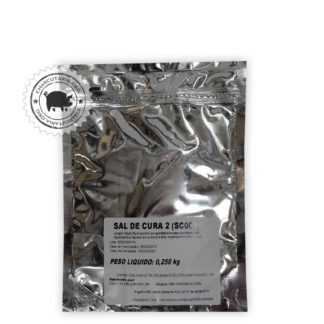 Sal de cura 2R$ 8,00
Sal de cura 2R$ 8,00 -
 Sal de cura 1R$ 8,00
Sal de cura 1R$ 8,00 -
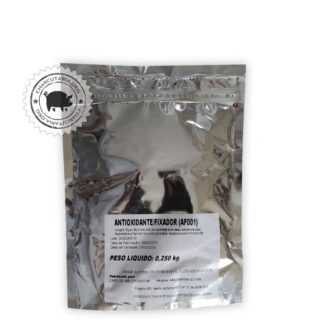 Antioxidante FixadorR$ 23,00
Antioxidante FixadorR$ 23,00 -
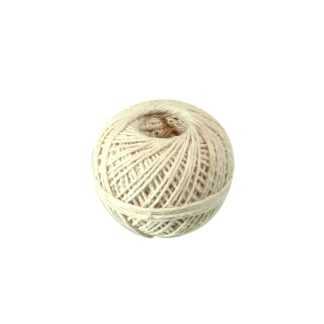 Barbante culinárioR$ 7,90
Barbante culinárioR$ 7,90 -
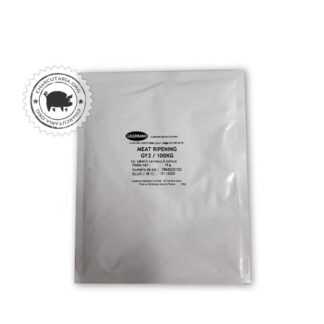 Cultura StarterO preço original era: R$ 69,90.R$ 59,90O preço atual é: R$ 59,90.
Cultura StarterO preço original era: R$ 69,90.R$ 59,90O preço atual é: R$ 59,90. -
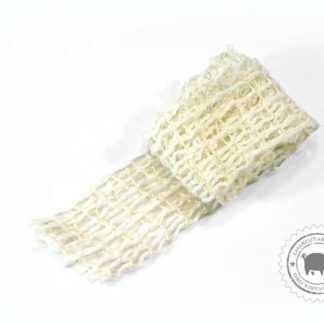 Rede elástica culinária 50mmR$ 15,00
Rede elástica culinária 50mmR$ 15,00 -
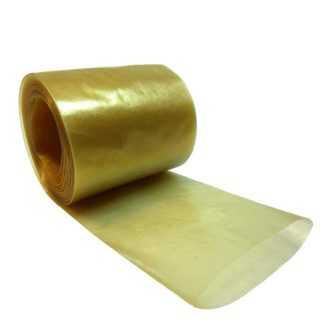 Tripa de colágeno 45mm rolo 5 metros salameR$ 25,00
Tripa de colágeno 45mm rolo 5 metros salameR$ 25,00 -
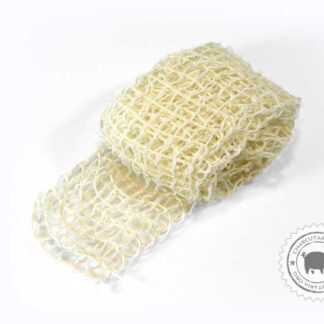 Rede elástica culinária 65mmR$ 18,00
Rede elástica culinária 65mmR$ 18,00 -
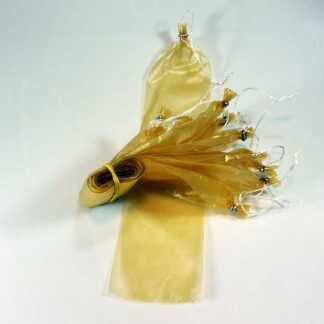 Tripa de colágeno salame 45mm 10 unidades amarradasR$ 22,00
Tripa de colágeno salame 45mm 10 unidades amarradasR$ 22,00 -
 Tripa de colágeno 80mm copa e salameR$ 29,90
Tripa de colágeno 80mm copa e salameR$ 29,90 -
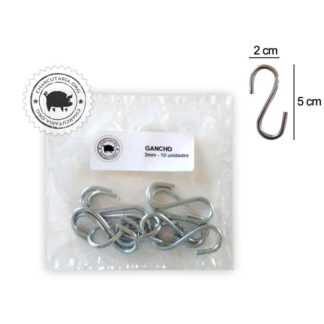 Gancho GalvanizadoR$ 12,00
Gancho GalvanizadoR$ 12,00 -
 Tripa de colágeno salame 50mm 10 unidades amarradasR$ 24,00
Tripa de colágeno salame 50mm 10 unidades amarradasR$ 24,00


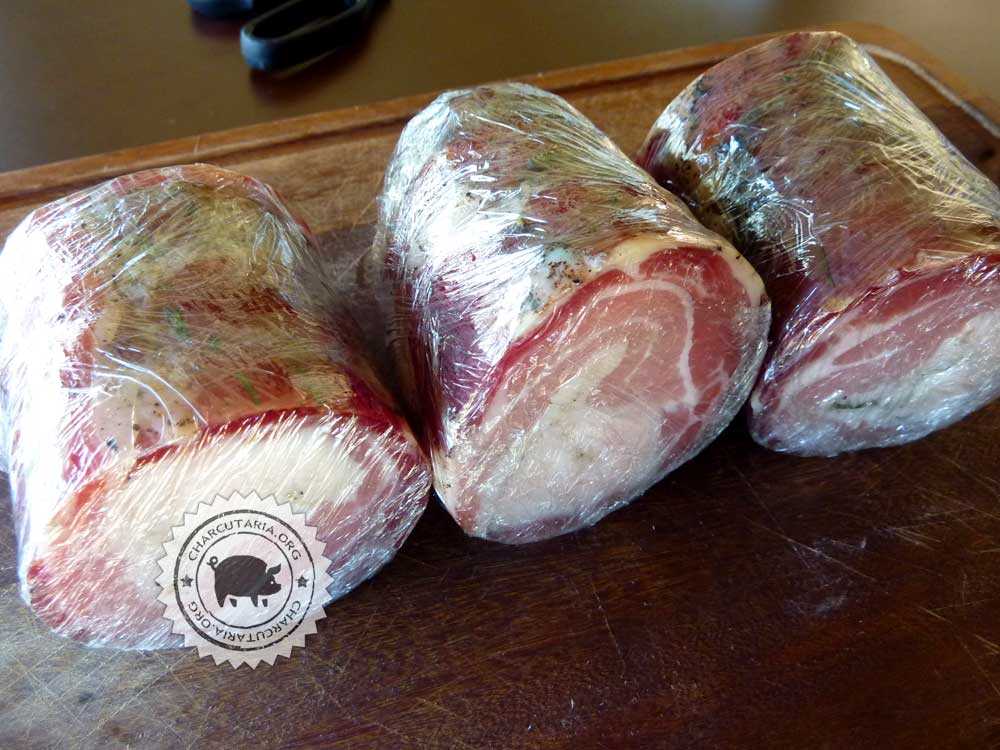
BOA TARDE!!
Vou fazer na geladeira,como deixar a umidade entre 80 a 90%? obrigado!!
Pode usar um umidificador e medir com um higrômetro. Para automatizar pode usar um controlador de umidade ligado ao umidificador.
Parabéns pelo site, dicas e receitas…Dúvida: Desculpe a minha ignorância, mas depois de finalizar esses processos, devo comer as fatias finas “cru” ou assar, fritar ou algo assim?
A pancetta é preferencialmente feita para cozinhar, fritar junto com outros pratos, pode usar como o bacon, por exemplo.
boa tarde
gostaria de saber se a panceta artesanal pode ser colocada na tripa de colageno ou tripa de boi grossa(aquela que poe na copa ), nao gostei da folha de colageno, posso substituir por algumas destas?. Qual o calibre da tripa recomendado .
Sim, pode colocar na tripa de colágeno ou no fundo bovino, que é mais espesso. Calibre 80 ou maior para não correr o risco de ficar muito apertado. Também pode envolver com uma tripa de porco aberta, cortada, como uma atadura.
Bom dia.
Existe necessidade em tirar o couro? E sim, no que prejudicaria a cura?
Att
Oi Marcos, pode manter o couro, a remoção é opcional.
Muito Obrigado!
Preparei a panceta e coloquei na Adega, notei que a adega alterou a temperatura algumas vezes e fez com que criassem bolores, isso é normal? Perdi a carne?
Bolor é bem comum, remova esfregando uma escova ou pano umedecido em água, sal e vinagre. 200ml de água, 10g de sal e 1 colher de sopa de vinagre. Faça isso sempre que o mofo aparecer, conforme a carne for secando os mofos vão parando de aparecer.
Olá. Estou preparando a minha primeira panceta, graças a vocês. Sigo e adoro o seu trabalho!
Olá a todos!
É recomendável aplicar cultura fúngica sobre a pancetta ou ela deve ser usada somente em salames e copa?
Pode usar na pancetta sim, vai ajudar a prevenir mofos indesejados e criar uma camada que auxilia no controle da perda de umidade.
Olá, Fiz uma gambiarra cobrindo a panceta com pano de queijo. Está com cheiro forte mas não demonstra carne estragando, é assim mesmo ou perdi a peça?
Oi Bruno, o pano tem as aberturas que são propícias para o alojamento de mofos, pode ser isso. Abra, limpe bem a peça e refaça o embrulho. Acredito que nã otenha perdido a a pancetta.
Boa tarde. Deixa tirar uma dúvida contigo. Se colocar a panceta numa adega com temperatura 13-14 graus e humidade 70-80 por cento, ainda assim preciso colocar o filme de colágeno ou posso manter sem o colágeno. Sabe dizer o que pode dar errado caso não coloque o filme. Outra coisa, se ao invés do filme de colágeno, colocar papel manteiga. Vai dar diferença? Não estou muito seguro da diferença entre o filme de colágeno e o papel manteiga. Obrigado e agradeço qualquer comentário.
Olá Luís, sobre o filme/folha de colágeno: é uma barreira projetada para controlar a perda de umidade, ela é bem eficiente para isso. Outro ponto positivo é a proteção contra as contaminações. A carne não fica exposta diretamente ao ambiente. Qualquer contaminação exterior que surgir será visível e poderá ser removida rapidamente sem ter afetado diretamente a carne. O papel manteiga, na minha opinião, é só uma “gambiarra” para fazer na geladeira sem controle de temperatura e umidade. Envolvem a carne com várias voltas do papel para tentar evitar o ressecamento externo da carne pela baixa umidade da geladeira. O papel não tem porosidade correta, pode ressecar ou selar demasiadamente a carne dependendo da porosidade de cada papel, não há um padrão. Outro ponto negativo é que o papel não tem aderência à carne, ele cria espaços vazios entre o papel e a carne onde contaminações podem surgir. Como o papel não é transparente essas contaminações só serão vistas ao abrir o embrulho. Há quem faça com sucesso, mas não é um invólucro que forneça controle sobre o processo. É possível fazer sem o filme/folha de colágeno com temperatura e umidade ideais? Sim, é possível, a carne fica mais exposta… Leia mais »
Faltou responder sobre a temperatura da adega
A temperatura na adega ideal é entre 12ºC e 14ºC. Mesmo com o filme de colágeno precisa deixar nesta temperatura. Pode variar um pouco para baixo, mas para cima é melhor evitar pois a gama de microrganismos que podem proliferar vai aumentando muito conforme a temperatura passa dos 14ºC.
Boa Tarde como faço para controlar a umidade na refrigeração, vou utilizar uma adega de vinhos para manter a temperatura.
Oi José Roberto, pode controlar a umidade acrescentando ou removendo potes com água ou panos umidos no interior da adega. Para monitorar precisará de um higrômetro analógico ou digital.
Olá, essa receita sem o filme deve colágeno? Apenas amarrando bem e deixando secar dentro da caixa plástica na geladeira?
Oi Yuri. neste caso deixe a caixa bem úmida para evitar o ressecamento do exterior da peça. Acredito que entre 80% e 90%. Vai demorar um pouco mais mas deve dar certo sim. Abraços!
Esta receita não é a mesma receita de consumo direto, para servir na tabua?
Sim, é a mesma, só deixe a pancetta perder 40% do peso antes de fatiar.